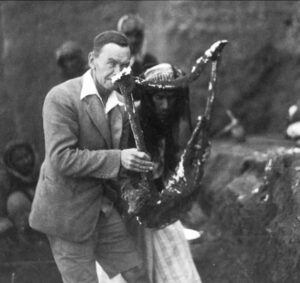Sir Leonard Woolley was, perhaps, the most famous archaeologist of his day. He was a man of enormous energy and a prodigious worker. Between 1907 and 1949 Woolley not only directed five major excavations in Egypt and Nubia, Syria and Iraq, but published the results quickly and in a highly professional manner.
Between 1922 and 1934, Woolley directed 12 seasons of excavations at the site of ancient Ur (Tell el-Mukayyar) in southern Iraq on behalf of the loins Expedition of the British Museum and The University Museum of the University of Pennsylvania. Even after 12 years, he had uncovered only a small part of the site. By comparison with current excavations, however, his excavations were very large-scale. The scale of operations paid off; the excavations produced an enormous amount of information on the history and topography of the ancient city and on the material culture of ancient Mesopotamia.
Of the areas that Woolley uncovered at ancient Ur, two were of particular importance. The first was the Royal Cemetery of the Late Early Dynastic period (c. 2600–2500 B.C.). These tombs contained outstanding examples of Sumerian artistic achievement and craftsmanship: the bull-headed lyres, the “standard of Ur,” the “ram caught in a thicket,” gold, silver, copper, bronze and stone vessels, headdresses and exquisite jewelry.
Read the rest of Woolley’s Ur Revisited in the online Biblical Archaeology Society Library.
